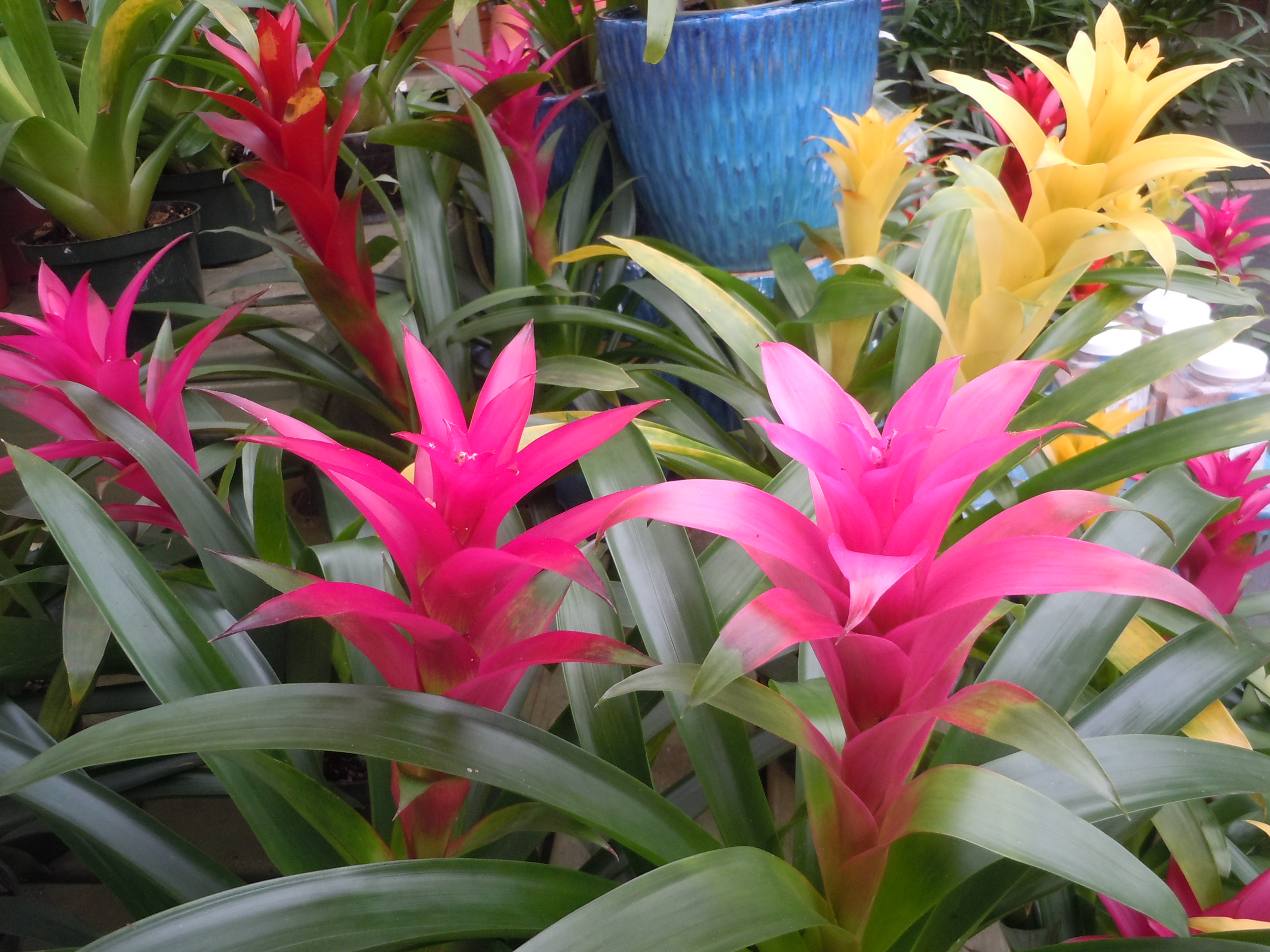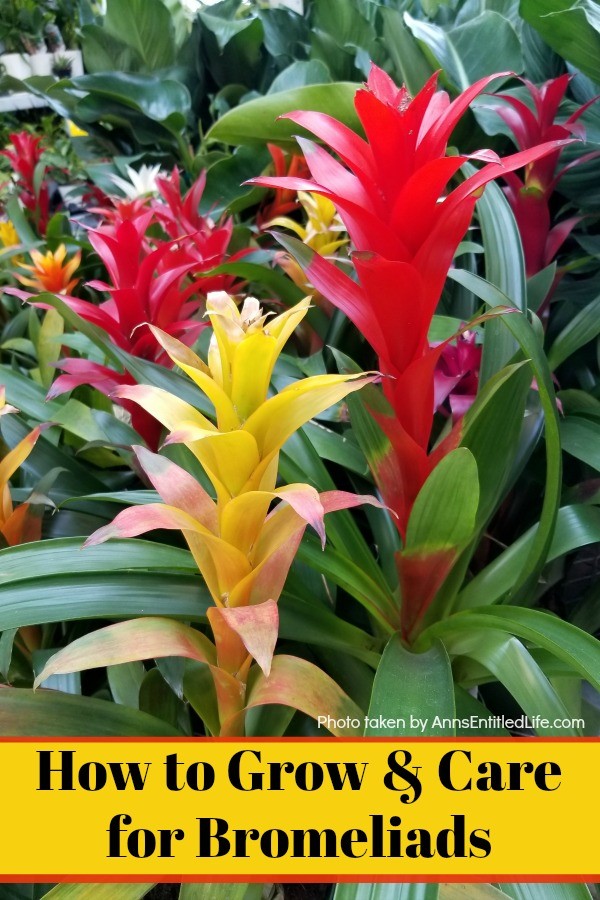Your How to care for bromeliads images are available in this site. How to care for bromeliads are a topic that is being searched for and liked by netizens today. You can Download the How to care for bromeliads files here. Get all free photos and vectors.
If you’re looking for how to care for bromeliads images information related to the how to care for bromeliads keyword, you have pay a visit to the right blog. Our site frequently provides you with hints for viewing the maximum quality video and image content, please kindly hunt and locate more enlightening video articles and images that fit your interests.
How To Care For Bromeliads. Bromeliads are fond of humidity, so you should moisten the leaves frequently. Bromeliads don’t like “wet feet”, or hanging out in standing water, so it’s important to let the soil dry out a bit between waterings. Next and an essential part of bromeliad care is the watering process. These plants need bright, filtered light in order to thrive, says neese.
 Growing A Bromeliad And How To Care For A Bromeliad Plant From lrgarden.cn
Growing A Bromeliad And How To Care For A Bromeliad Plant From lrgarden.cn
Although bromeliads don’t necessarily need feeding, this ‘well’ is the place to apply fertilisers if you wish. It�s a form of cloning. The method that you pot the plant and the potting medium you choose can dramatically affect the moisture of the bromeliads. Epiphytic plants, also known as air plants, grow on trees or rocks, not in soil. Using tap water on bromeliads can damage or even kill the plant. To know more about how to water the plants, click here.
They likewise prefer soil with ph levels of between 5.0 to 6.0.
To make the most of this feature, make sure that the central. Bromeliads are strong and very easy to maintain. Pick a pot with drainage holes to allow excess water to drain. To make the most of this feature, make sure that the central. Some bromeliads are epiphytic, so instead of pouring, mist water around them to keep them moist. And just about as many ways.
 Source: gardeningknowhow.com
Source: gardeningknowhow.com
To increase the humidity in your home, we suggest that you mist it often, place it near a humidifier, or use a pebble tray. Epiphytic plants, also known as air plants, grow on trees or rocks, not in soil. Pick a pot with drainage holes to allow excess water to drain. A bright and steamy bathroom is the perfect home, mimicking the warm, moist, tropical habitats that many bromeliads grow in naturally. Here’s everything you need to know about how to care for your bromeliad.
 Source: walterreeves.com
Source: walterreeves.com
Your bromeliad is not known to be toxic to pets and humans, however, it may cause skin irritation in sensitive individuals. Some bromeliad plants you can grow as air plants on a piece of wood in your home. Put your bromeliad in a light place (not in full sun) and water it regularly (into the calyx of the plant) and it will be very happy. However, watering will be different for epiphytic bromeliads. To know more about how to water the plants, click here.
 Source: blog.omysa.com
Source: blog.omysa.com
Feed the plants with a half strength fertilizer every month in the growing season. Once the plant is blooming, a slightly lower temperature will help it last longer. With their splashy flowers that call to mind the tropics, bromeliad plants offer an exotic touch to any home. For reference, young bromeliad plants can be safely potted in a 4″ container. Dab scale bugs with a cotton swab doused with rubbing alcohol.
 Source: bromsocnsw.org.au
Source: bromsocnsw.org.au
Using tap water on bromeliads can damage or even kill the plant. These baby bromeliads require the same care as the parent plant. Here’s everything you need to know about how to care for your bromeliad. Water needs are easily met by filling the cup at the base of the leaves. To increase the humidity in your home, we suggest that you mist it often, place it near a humidifier, or use a pebble tray.
 Source: glidetrack.com
Source: glidetrack.com
The family bromeliaceae encompasses more than 2,500 species, and almost all of them are native to the tropical americas—from chile and argentina to brazil and the caribbean. Feed the plants with a half strength fertilizer every month in the growing season. There are two ways to water a bromeliad: As soon as the pup forms a cup, it is important to keep it filled with water so the new plant receives adequate moisture. Bromeliads need lots of bright light.
 Source: annsentitledlife.com
Source: annsentitledlife.com
The water of the plant is different compared to most other indoor plants. Pick a pot with drainage holes to allow excess water to drain. Next and an essential part of bromeliad care is the watering process. To increase the humidity in your home, we suggest that you mist it often, place it near a humidifier, or use a pebble tray. You must know which bromeliad species you have.
 Source: walterreeves.com
Source: walterreeves.com
Also, be careful about the type of water you use on your bromeliad plants, because they are very sensitive to the chemicals in regular tap water. These baby bromeliads require the same care as the parent plant. Never drop slow release fertiliser pellets into the reservoir as they will quickly dissolve and overdose your plants. Although sometimes susceptible to mealybugs, aphids, and scale, bromeliads are largely free of severe pests. Bromeliads generally take a long time to grow, so gutierrez recommends buying one in the size you want it to be for most of its life.
 Source: thespruce.com
Source: thespruce.com
Dab scale bugs with a cotton swab doused with rubbing alcohol. Epiphytic plants, also known as air plants, grow on trees or rocks, not in soil. There are dozens of types of bromeliads you can choose from, all of which boast thick foliage that grows. If you live in a dry area, then a plastic container will be best in this situation. Some bromeliad plants you can grow as air plants on a piece of wood in your home.
 Source: lrgarden.cn
Source: lrgarden.cn
You can use orchid mix for bromeliads (gutierrez sometimes does this) or a mix of peat moss, perlite, charcoal, and/or bark. Fill it with water and flush it regularly to prevent stagnation. Using tap water on bromeliads can damage or even kill the plant. Pick a pot with drainage holes to allow excess water to drain. Dump out the water and refresh it every week or so to keep the water from going stagnant.
 Source: pinterest.com.au
Source: pinterest.com.au
Put your bromeliad in a light place (not in full sun) and water it regularly (into the calyx of the plant) and it will be very happy. This kind of propagation is known as asexual reproduction; For reference, young bromeliad plants can be safely potted in a 4″ container. These plants need bright, filtered light in order to thrive, says neese. Pick a pot with drainage holes to allow excess water to drain.
 Source: annsentitledlife.com
Source: annsentitledlife.com
Fill it with water and flush it regularly to prevent stagnation. For reference, young bromeliad plants can be safely potted in a 4″ container. You can use orchid mix for bromeliads (gutierrez sometimes does this) or a mix of peat moss, perlite, charcoal, and/or bark. Although sometimes susceptible to mealybugs, aphids, and scale, bromeliads are largely free of severe pests. Also, be careful about the type of water you use on your bromeliad plants, because they are very sensitive to the chemicals in regular tap water.
 Source: gardeningknowhow.com
Source: gardeningknowhow.com
Bromeliads generally take a long time to grow, so gutierrez recommends buying one in the size you want it to be for most of its life. Bromeliads need lots of bright light. Here’s everything you need to know about how to care for your bromeliad. A bright and steamy bathroom is the perfect home, mimicking the warm, moist, tropical habitats that many bromeliads grow in naturally. If you fertilize, choose a liquid fertilizer that was made for bromeliads or indoor plants.
 Source: thespruce.com
Source: thespruce.com
Many bromeliads have a tank — the part where its leaves come together to form what looks like a cup. Bromeliad is the name for a family of plants that is incredibly diverse. Never drop slow release fertiliser pellets into the reservoir as they will quickly dissolve and overdose your plants. Dump out the water and refresh it every week or so to keep the water from going stagnant. Some bromeliad plants you can grow as air plants on a piece of wood in your home.
 Source: plantcaretoday.com
Source: plantcaretoday.com
1 you can eliminate mealybugs and aphids by spraying the plant with a mixture of water and a few drops of dish soap. As soon as the pup forms a cup, it is important to keep it filled with water so the new plant receives adequate moisture. If you feel that your bromeliad is outgrowing its planter, it is best to repot the plant in the spring time. The water of the plant is different compared to most other indoor plants. Some bromeliad plants you can grow as air plants on a piece of wood in your home.
 Source: blog.sheridannurseries.com
Source: blog.sheridannurseries.com
Mix with water and water the soil around the plant, never the leaves. There are two ways to water a bromeliad: If you live in a dry area, then a plastic container will be best in this situation. By watering the soil until water just starts to drain out the bottom, or by filling the “cups” between the plant leaves. Bromeliads need lots of bright light.
 Source: pinterest.com
Source: pinterest.com
1 you can eliminate mealybugs and aphids by spraying the plant with a mixture of water and a few drops of dish soap. There are dozens of types of bromeliads you can choose from, all of which boast thick foliage that grows. One bromeliad can product between three and five pups! Here’s everything you need to know about how to care for your bromeliad. Also, be careful about the type of water you use on your bromeliad plants, because they are very sensitive to the chemicals in regular tap water.
 Source: blog.sheridannurseries.com
Source: blog.sheridannurseries.com
The family bromeliaceae encompasses more than 2,500 species, and almost all of them are native to the tropical americas—from chile and argentina to brazil and the caribbean. Although bromeliads don’t necessarily need feeding, this ‘well’ is the place to apply fertilisers if you wish. Once the plant is blooming, a slightly lower temperature will help it last longer. They likewise prefer soil with ph levels of between 5.0 to 6.0. Or, if you don’t like concocting your own mix, just.
 Source: blog.sheridannurseries.com
Source: blog.sheridannurseries.com
The method that you pot the plant and the potting medium you choose can dramatically affect the moisture of the bromeliads. Water needs are easily met by filling the cup at the base of the leaves. If you’re wondering how to grow and care for bromeliads or bromeliaceae, a family of monocot flowering plants, you’ve come to the right place. Bromeliad plant care is easy and requires no special tools or fertilizers. Mix with water and water the soil around the plant, never the leaves.
This site is an open community for users to submit their favorite wallpapers on the internet, all images or pictures in this website are for personal wallpaper use only, it is stricly prohibited to use this wallpaper for commercial purposes, if you are the author and find this image is shared without your permission, please kindly raise a DMCA report to Us.
If you find this site value, please support us by sharing this posts to your favorite social media accounts like Facebook, Instagram and so on or you can also save this blog page with the title how to care for bromeliads by using Ctrl + D for devices a laptop with a Windows operating system or Command + D for laptops with an Apple operating system. If you use a smartphone, you can also use the drawer menu of the browser you are using. Whether it’s a Windows, Mac, iOS or Android operating system, you will still be able to bookmark this website.






